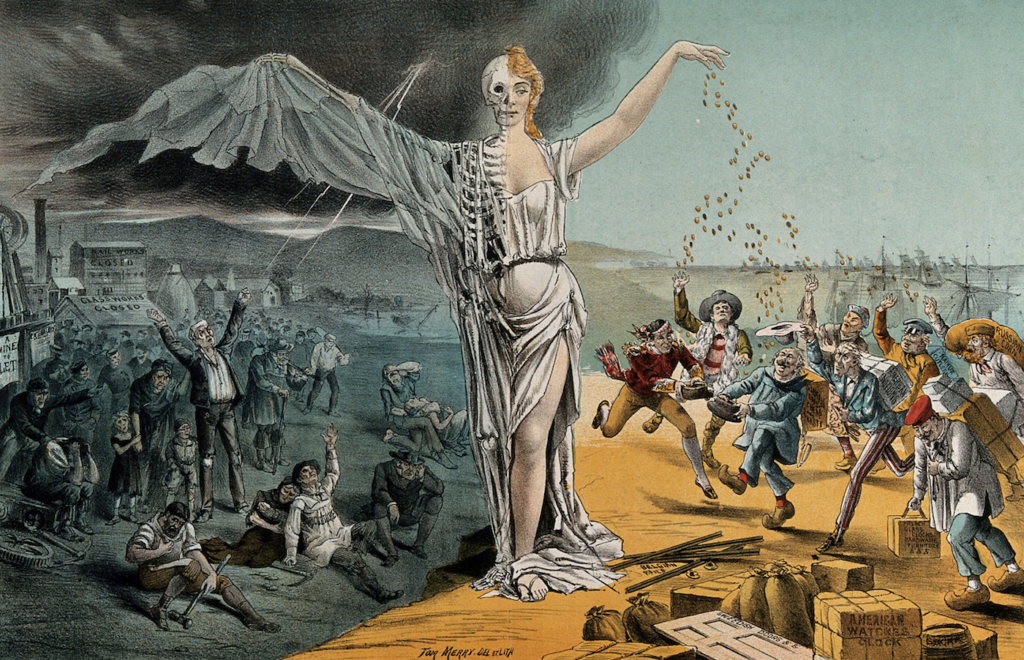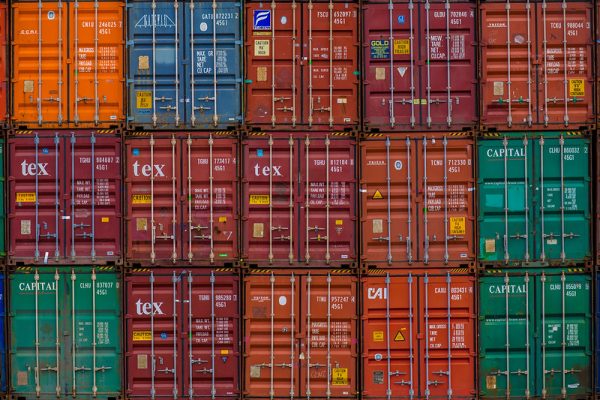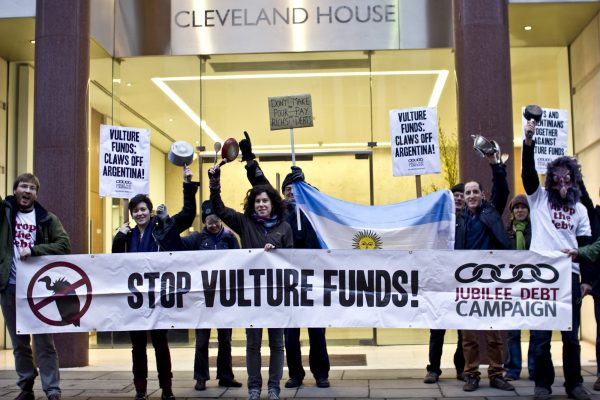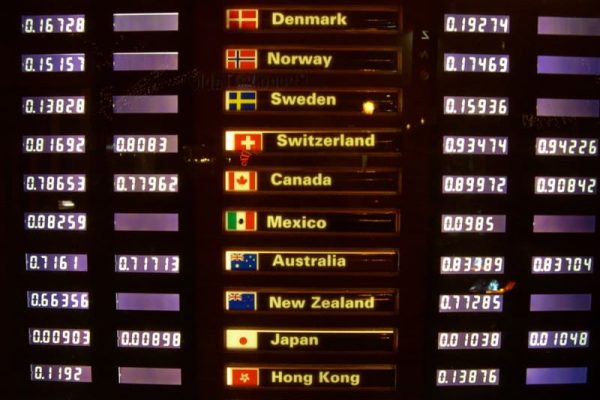Pax Economica: Left-Wing Visions of a Free Trade World
Marc-William Palen
Princeton University Press, $35 (cloth)
To many today, the idea that free trade brings peace looks like bygone naïveté at best and neoliberal apologism at worst. Contrary to the aspirations of the late twentieth-century free trade moment, history—much less war—did not end with the expansion of global trade. And now, in the aftermath of the rise of China and the 2008 financial crisis, free-trade optimism in the United States has given way to bipartisan consensus in favor of economic nationalism—what some are even calling a “new Cold War” with China.
At a time when it can be hard to remember why anyone ever thought otherwise, historian Marc-William Palen has excavated a history of those who believed that free trade and peace went together. Palen characterizes these idealists as “left-wing,” though his tent is big, accommodating Christian social reformers such as Kirby Page and Sherwood Eddy as much as revolutionary Marxists like Vladimir Lenin, Karl Kautsky, and to some extent Marx himself. In practice, the wide range of nineteenth- and twentieth-century thinkers he considers were united by opposition to war. They thought that trade barriers were just war by other means—and that free trade could create a world without war.
Palen is clearly sympathetic to this view; his aim is to vindicate free trade as a friend of peace, if only because “real free trade” has scarcely, if ever, been tried. He offers an instructive reckoning with what has passed for free trade until now, allowing us to see that actually existing free trade since the 1970s let us down because it was never free. Instead, neoliberal trade was burdened by unilateralism all along, amounting to little more than war by other means. In our increasingly nationalist moment, he asks, is there a pro-peace, anti-imperial vision of free trade still available to us?
At the center of Palen’s story is the English politician Richard Cobden (1804–1865) and “Cobdenite intellectuals” that followed him such as Herbert Spencer and Henry George. Cobden is perhaps best known for his efforts in challenging the Corn Laws in Britain—tariffs on imported corn—which he and his followers saw as upholding landed interests and increasing consumer prices for the average worker. Over time, Cobden noted the links between his battle against tariffs and trade restrictions and the broader struggle for world peace. Governments of the day raised revenue for waging wars through tariffs, which in turn raised consumer prices. Conversely, lower military expenditures meant lower tariffs, and when tariffs came down, so did the metaphorical barriers between countries, enabling free association for the sake of mutual benefit and prosperity.
True free trade, Cobden and his followers believed, was free not just in the sense of being open to all but in the sense of being voluntary and uncoerced. This meant that free trade could not be achieved through use of force, contrary to the pretensions of British empire. Where his opponents believed that nations had to be forced to open up if they did not voluntarily accept Britain’s terms of trade, Cobden opposed Britain’s imperial rule of India and invasion of Canton. He and his followers clearly saw the connection between mercantilist imperialism abroad and aristocratic rule at home. It was, after all, the elites of each nation that gained the most from restrictions on trade and the waging of war.
This vision of free trade found a foil in German American economist Friedrich List and his followers, who argued for a policy that would protect infant industries by increasing tariffs. As these thinkers saw it, Britain was denying other empires the very means it had used to consolidate its power in the world. This Listian alternative did have a vision of international trade, but it was one of trading blocs created through tit-for-tat reciprocity, tariff retaliation, and imperial expansion (with colonies providing raw materials at low prices).
List’s ideas had their roots in the “American System,” which in turn dated back to Alexander Hamilton’s efforts in the newly independent United States to shore up U.S. economic competitiveness. List’s The National System of Political Economy (1841) drew from this tradition but found a wider audience internationally, gaining the support of Western industrializing powers that wanted to contest Britain’s dominance. By the end of the nineteenth century, politicians such as Otto von Bismarck and William McKinley took up List’s cause in full force, with the latter’s Republican Party opening up a new age of U.S. empire in the Caribbean and Pacific.
Cobden’s free-trade pacifism, meanwhile, endured in the work of a wide range of activists and social reformers, from early feminists in the Women’s International League for Peace and Freedom to Christians in the YMCA. After nearly a century, their efforts appeared to pay off: the end of World War II promised a new moment of multilateralism. These activists celebrated the birth of the United Nations and the Bretton Woods institutions. Cordell Hull, secretary of state under Franklin Delano Roosevelt and successor to the advocates of commercial peace, received the Nobel Peace Prize for his role in supporting the nascent UN.
But the door to world peace under multilateral institutions closed as quickly as it opened. Palen argues that the left-liberal and pacifist associations of free traders were lost to the geopolitical fracturing of the Cold War. The story of U.S.-led “free trade” during this period, which Palen tells in the final chapter of his book, had two features.
The first was trading blocs that closely resembled Listian tariff walls, often taking the form of regional integration, starting with the creation of the European Economic Community in 1957 and later exemplified by the North American Free Trade Agreement of 1994. As Palen writes, these fragmented approaches to free trade were politically malleable, available for repackaging to domestic constituencies as either free-trade initiatives or protectionist blocs between ideologically aligned countries.
The second feature of U.S.-led “free trade” was the use of force by the United States to deal with nations outside its sphere of influence. Successive U.S. administrations resorted to interventionism in places like Iran, Chile, Indonesia, and Haiti to suppress home-grown political movements and prop up authoritarian regimes, all in the name of protecting the market and securing trade. They also used economic coercion—with effects as devastating as outright invasion—to freeze out those seen as enemies. The clearest example is the Cuban embargo, which along with many other sanctions has been unrelentingly enforced—with devastating humanitarian consequences—even and especially during the heyday of neoliberalism. Initiated in 1962 under John F. Kennedy, the embargo is the longest-running trade embargo in modern history.
On this account, the neoliberals who were ascendant by the 1970s dramatically shifted the meaning of free trade—all but rejecting Cobdenite commitments to peace and democracy and coopting the multilateral organizations that an earlier generation of free traders had pushed hard to create. Institutions such as the General Agreement on Tariffs and Trade (GATT), the predecessor to the World Trade Organization (WTO), pursued a vision of “free trade” shaped above all by the imperative of U.S. geopolitical dominance.
Though Palen does not discuss them in the book, the history of postwar multilateral organizations buttresses his account of the U.S. postwar trade agenda. According to the conventional narrative, it was under the auspices of U.S. hegemony that free trade dramatically expanded in the last decades of the twentieth century. As Andrew Lang explains in World Trade Law after Neoliberalism (2011), the United States led the charge on free trade agreements and multilateral instruments, like the GATT and WTO, that lowered tariffs and liberalized trade. But in reality, these organizations stood for “free” trade only as it was defined according to U.S. advantage.
The 1970s were a turning point for U.S. trade policy, marking the beginning of the end of its postwar dominance in world markets. In that decade, U.S. imports began to increase at a faster pace than exports, eventually opening a trade deficit that has never closed. At the same time, the United States’ greatest allies, Japan and the European Community, were also its greatest rivals: as America went from producing a third of world manufactures in the 1950s to 13 percent in 1971, the European and Japanese economies dramatically increased manufacturing capacity, especially in the steel and automobile industries.
In this environment, the United States faced domestic pressure to address its slipping competitive advantage. Soon there emerged a consensus between organized labor and business interests that the problem was other countries’ protectionism—that is, other nations failing to play by the rules of the free-market game. Much of this ire was directed toward Japan. As hearings for what became the landmark Trade Act of 1974 were under way, George Meany, former president of the AFL-CIO, made an impassioned speech before Congress. U.S. industrial rivals such as Japan enacted laws that had the effect of restricting imports, he claimed—even if they were not explicitly called tariffs.
In many instances these laws dealt with domestic regulations, ranging from license requirements for selling products and screen time quotas for motion pictures to state monopolies on agricultural goods. Meany and others were particularly indignant at the Japanese government’s perceived support of its domestic industry through such policies as cheap credit and research and development subsidies. Meany was describing what came to be known as “non-tariff barriers” to trade: domestic regulations of industry that made it difficult in practice, if not explicitly on paper, for foreign imports to break into a market.
These demands led to the inclusion of what is called “Section 301” in the Trade Act of 1974, which enabled retaliatory measures (such as imposing duties or withdrawing trade concessions) in response to what the president deemed to be “unjustifiable” or “unreasonable” import restrictions. These restrictions did not have to constitute violations of international trade law, and often they were not. Under Ford and Carter, the primary target of Section 301 was Japan and other wealthy industrial rivals, but successive U.S. presidents increasingly used the provision to impose punitive tariffs against other countries.
Reagan was a central figure in these developments. Under his administration, the United States pioneered the use of Section 301 powers to discipline developing countries for their alleged failure to take intellectual property rights seriously. (The theory was that U.S. corporations lost their advantage vis-à-vis local industry for the technologies that they had invested in developing.) Such violations did not contravene international trade law at the time, but through these measures, the United States managed to put intellectual property protections on the agenda for multilateral negotiations in the GATT. In the Uruguay Round, which ended in 1994, the United States successfully pushed for the Agreement on Trade-Related Aspects of Intellectual Property Rights. In order to maintain access to world markets, developing countries had to pass domestic laws to come into compliance with these international standards, stifling domestic industrial production and even the manufacturing of generic drugs.
These negotiations ultimately climaxed in the birth of the WTO in 1995—a moment of triumph for the Washington Consensus. The United States, in the end, stood at the vanguard of trade liberalization only by getting to decide what free trade meant. So much for the fall of the Soviet Union heralding the end of history.
Can we imagine a truly free alternative, something more than unilateralism in disguise? On this score, Palen gestures to the postwar vision of the Third World movement and its allies, which was open to economic nationalism in a remedial, catch-up mode while stressing solidarity between oppressed nations.
This vision was not without its tensions and ironies. As Palen notes, List’s theory gained support in the nineteenth-century anticolonial movement in India, even though List himself thought the colonized nations of Africa and Asia deserved their fate. Indeed, using List’s own metaphor, Indian nationalists saw Britain’s forcibly imposed low tariffs as a way of “kicking away the ladder” to India’s industrial development. Jawaharlal Nehru, for example, believed that anticolonial economic nationalism—including boycotts of goods from colonial metropoles—was compatible with the international peace movement. Such boycott movements had an aspect of transnational solidarity, linking Ireland to India to China. Prominent Indian nationalists like Dadabhai Naoroji were even more strongly in favor of free trade, but they saw economic nationalism as a temporary stepping-stone to gaining the kind of autonomy necessary for genuinely free trade.
After decolonization, representatives of the Third World also attempted to balance anticolonial economic nationalism with international solidarity. At around the same time that Meany was testifying before Congress, a movement of newly independent, Global South nations to remake the world economy was on the rise. As Adom Getachew has charted in these pages, these efforts culminated in the New International Economic Order (NIEO) in the 1970s. Even as they advocated for economic sovereignty, proponents of the NIEO often took a conciliatory tone, stressing the vision of peaceful trade and interdependence that lay at the heart of their movement. At times, they even stressed that they were the “true” proponents of free trade against the monopolistic practices of Western former imperial powers.
As Salvador Allende argued in a landmark speech in 1972 at the UN Conference on Trade and Development (UNCTAD)—one of the institutional homes of the NIEO—the free trade that Western powers had evangelized was not free at all. The Bretton Woods institutions had advanced an agenda of selective market liberalization, lowering tariffs in areas only where it would be advantageous for wealthy countries. The terms of trade made it harder, in particular, for poor countries to export agricultural goods and raw materials. They argued for agreements to fix the price of commodities within a certain range, and more generally to grant preferential terms of trade to rectify the disadvantages that had accumulated from the colonial period.
For trade to be truly free, Allende argued, Western countries also had to stop using trade as a tool of great power struggle—and in particular, developed countries should not write trade policy that discriminated on the basis of the political system that developing countries adopted. This view was ultimately reflected in the UN General Assembly’s Charter of Economic Rights and Duties of States of 1974, which specified that developed countries should grant socialist countries “conditions for trade not inferior to those granted normally to the developed market economy countries.” (This view stood in contrast to the position held by many in the United States that this status should not be extended to socialist or Soviet bloc countries.) The charter passed by a vote of 120 to 6, with 10 abstentions; only the United States, the United Kingdom, Belgium, Denmark, Germany, and Luxemburg voted against.
As we know by now, these dreams came to a halt as the United States resisted granting preferential terms of trade, leading to a standstill in negotiations over the NIEO. Meanwhile, the U.S. government brutally intervened in countries, like Allende’s Chile, which had democratically elected left-wing movements. With the oil crisis at the end of the 1970s, developing countries fell deep into debt, the clutches of which they have not managed to escape from today.
Indeed—though Palen doesn’t give much attention to it—financialization poses another obstacle to a more just vision of globalization today. The money that Global South countries borrowed from U.S. financial institutions after the oil shocks came from the petrodollars that financial institutions gained from the oil price spikes. While expanding financial markets were supposed to inject new capital and liquidity in developing economies, they only opened the door to speculation and shocks caused by the short-term swings in capital, without changing the underlying productive capacity of the economies themselves. Because of this lopsided form of globalization, the vast majority of Global South countries did not experience improvements in their standard of living, and many even experienced sharp declines.
These features were clear enough at the time. In 2000, Martin Khor—then director of the Third World Network—wrote a discussion paper for UNCTAD. Looking back at the turn of the century, shortly after anti-globalization protests in Seattle, Khor wrote that economic globalization was not one phenomenon but three: liberalization in finance, trade, and direct investment. At the time, globalization had mostly meant the first. In trade, high tariffs persisted in sectors like agriculture where developing countries had a comparative advantage; as for investment, even though it had expanded somewhat between Global North and Global South, it mostly only reached a small set of developing countries. Today, some forms of protectionism in agriculture (most notably export subsidies) have declined significantly, but developed countries’ governmental support for agriculture has actually increased over the first two decades of the twenty-first century.
Moreover, U.S. dominance is baked into the very structure of neoliberal financialization. With the U.S. dollar as global reserve currency, financial transactions flow through and enrich the United States. This takes us further and further away from the model of mutually advantageous trade—in the Ricardian model, of commodities or even manufactured goods—that earlier generations of free-trade optimists could believe in. Other, so-called “non-traditional” currencies such as the renminbi and Indian rupee have recently made a bid to contest the dollar’s dominance, but the use of non-dollar currencies in large deals remains the exception. Meanwhile, China’s Belt and Road initiative proposes a model of globalization focused on financing and direct investment for infrastructure. It remains to be seen whether this vision represents a genuine alternative; so far, China’s approach seems to have been what legal scholar Ryan Martinez Mitchell calls “mimetic unilateralism”—the use of the same unilateral tools that the United States has used to assert geopolitical dominance in and through markets.
These are significant challenges, but an alternative is necessary to the escalating nationalist rhetoric that harms minorities at home and forces countries to choose sides in geopolitical struggle abroad. As Jake Werner has argued, progressives should reject the escalating zero-sum competition with China and instead support remaking the global economy through creating demand in the Global South. The realities of global commerce demand serious thinking about what a liberatory vision of free trade could look like, and on this score Palen’s book is a necessary and welcome provocation, if not a blueprint.
Any such vision will have to make careful distinctions between the kinds of markets we want to open up and the kinds of barriers to trade that should be dismantled. It will also have to be clear-eyed about putting countries in the Global South on level footing after centuries of extraction and structurally disadvantageous terms of trade—and thus about being genuinely global in the legitimacy and consensus it commands.
Boston Review is nonprofit and relies on reader funding. To support work like this, please donate here.








